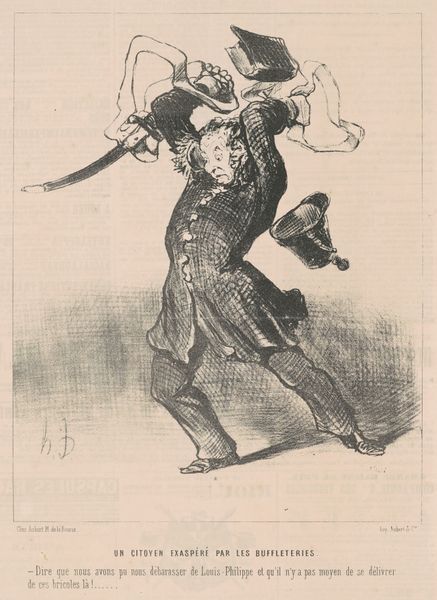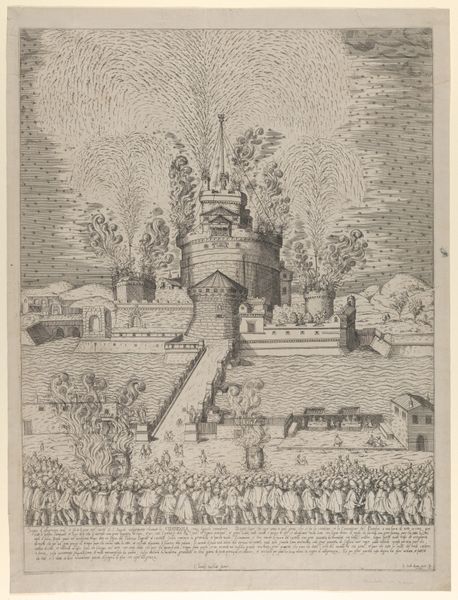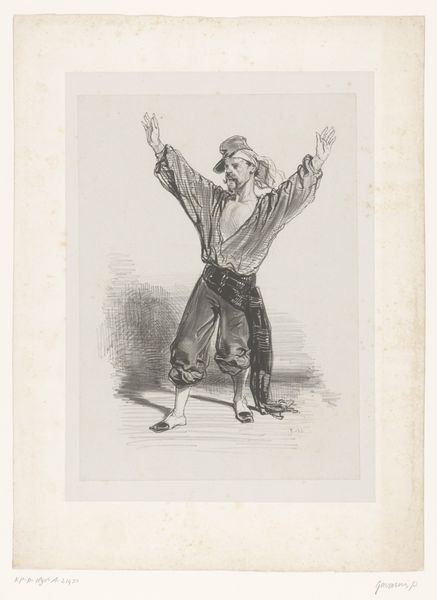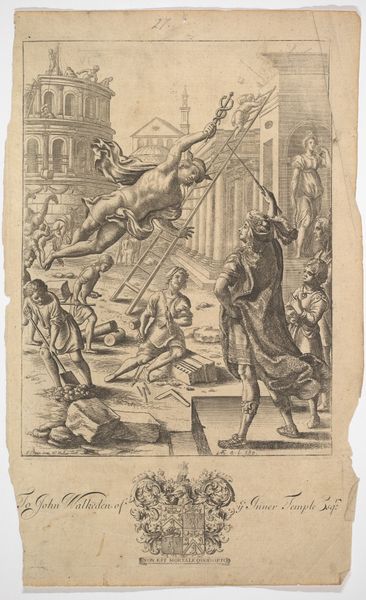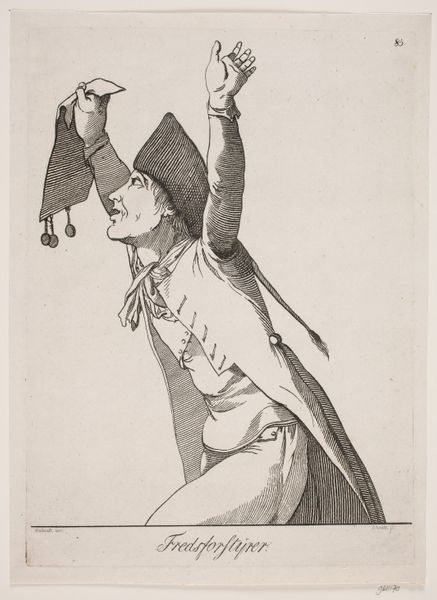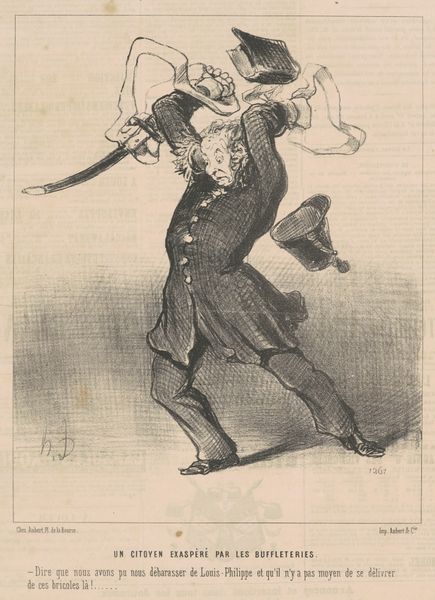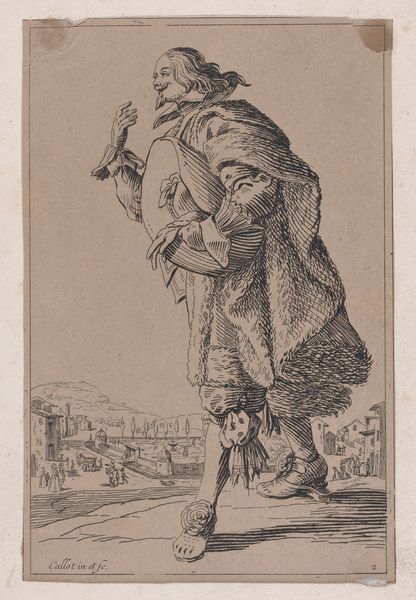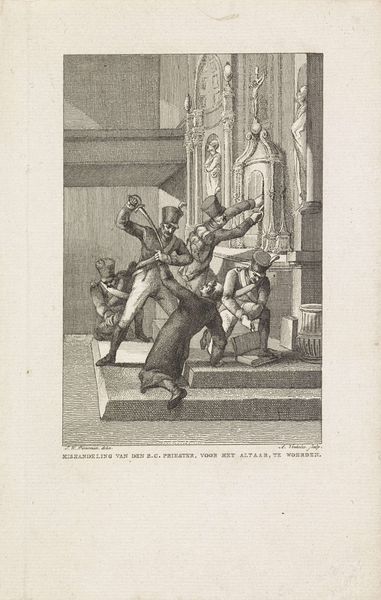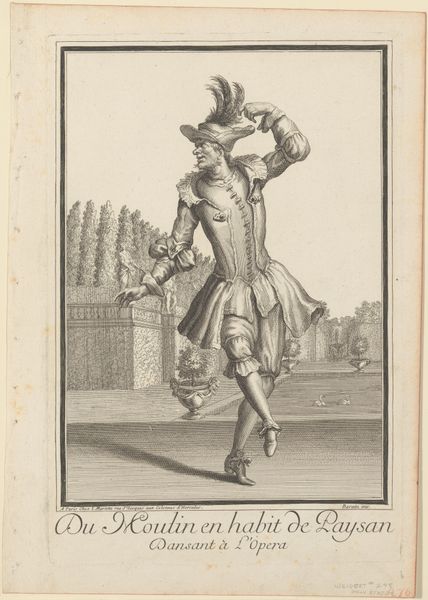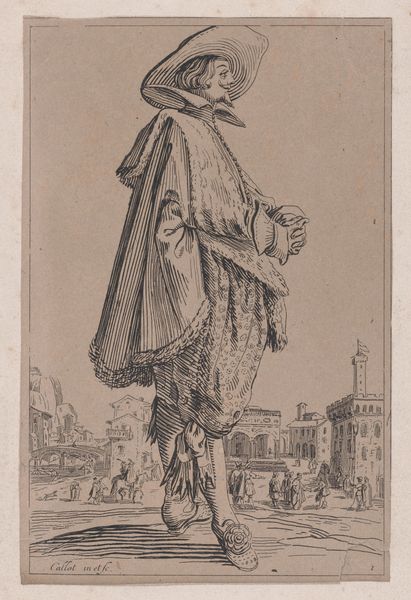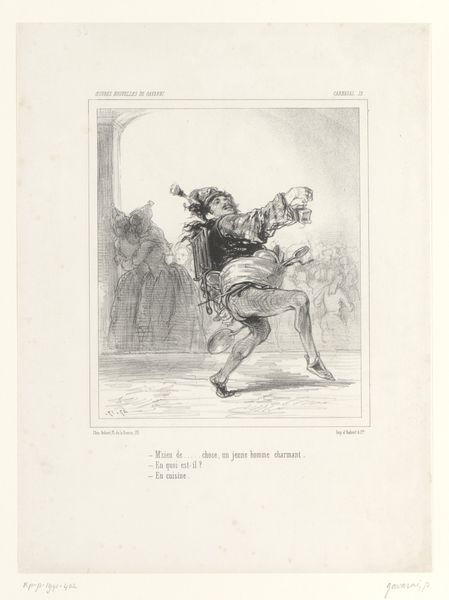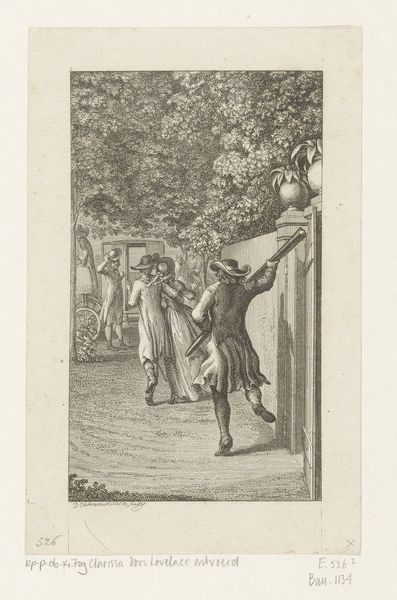
Plunderaar uit het Aansprekersoproer te Amsterdam, 1696 1696 - 1698
0:00
0:00
print, intaglio, engraving
#
baroque
# print
#
caricature
#
intaglio
#
old engraving style
#
traditional media
#
caricature
#
figuration
#
line
#
genre-painting
#
history-painting
#
engraving
Dimensions: height 227 mm, width 161 mm
Copyright: Rijks Museum: Open Domain
Editor: Here we have Pieter van den Berge’s etching, "Plunderaar uit het Aansprekersoproer te Amsterdam, 1696," dating between 1696 and 1698. The figure is so animated, almost theatrical! With a crowd of people behind him, what do you think van den Berge was trying to capture about Amsterdam at this time? Curator: This print, an intaglio from the late 17th century, is more than just a caricature; it's a potent piece of political commentary. Given that it's titled "Pillager of the Undertakers' Riot," van den Berge wasn't simply documenting an event. Instead, he actively engaged in shaping public opinion through imagery. How do you think depicting this "pillager" with such exaggerated features and gestures would have affected the public's perception of the riot itself? Editor: I guess it demonizes him? Makes him a figure of ridicule instead of someone with legitimate grievances. I noticed there appear to be bodies hanging in the background… It’s quite gruesome. Curator: Exactly. This isn't a neutral depiction. Van den Berge likely had a specific socio-political stance. Prints like these were powerful tools for disseminating opinions and influencing the masses. They played a crucial role in constructing a collective memory and understanding of events like the Aansprekersoproer. If we consider who commissioned or supported van den Berge, perhaps we might understand more clearly which segment of society this artist was trying to appeal to. Editor: So by understanding the political climate and the artist's affiliations, we can decipher the message they intended to convey? Curator: Precisely. It's about unearthing the power dynamics at play and understanding how visual imagery was used to solidify certain narratives while suppressing others. Editor: That gives me a whole new way to look at even seemingly simple images. Thanks! Curator: My pleasure! Examining art as a form of historical and social dialogue always reveals new perspectives.
Comments
No comments
Be the first to comment and join the conversation on the ultimate creative platform.
